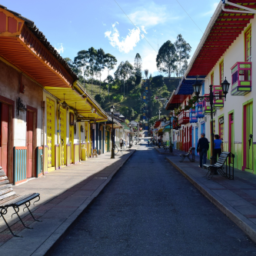

There are thousands of natural languages, but if you believe that none of them is perfect for you—Why not create your own? Sure, but how do I start?—You might be asking. Let’s delve into the arcana of language creation.
Whether you are designing a language for a fantasy world, a secret code for friends, or simply testing, you will stop being just a speaker, and become a creator. We will walk you through the most important stages. Let’s begin!
Contents
History of Constructed Languages
In simple terms, constructed languages, or conlangs, are entirely man-made. They are a product of vivid imagination, created from scratch by an inventor or a group of creative people.
Unlike natural languages that have evolved over centuries of human interaction, conlangs are a deliberate invention. They are designed for a variety of purposes:
- use in a fictional universe,
- facilitating international communication,
- as an intellectual exercise.
When did this trend start? It is a lot older than you might think. We can trace the origins of constructed language to the Middle Ages. Back then, secret society codes first appeared. The intention was to create a mode of communication exclusive to a select few. The purpose: secrecy or subversion.
An example is lingua ignota described by an abbess, Hildegard of Bingen. It consisted only of vocabulary. There were no grammar rules. The language had its alphabet. Lingua ignota died with the death of its inventor, but the glossary has survived until today.
Creating Languages in the Modern World
The true evolution of conlangs began in the modern era. It skyrocketed with the rise of fantasy and science fiction genres. Writers began crafting detailed languages as part of their world-building process to add the desired depth of realism to their imagined lands.
From Tolkien’s Elvish, and Star Trek’s Klingon, to George R.R. Martin’s Dothraki, the languages became full linguistic systems. For more realism, the authors (and the fans) completed them with their own syntax, grammar, and idiomatic expressions.
Over the years, the creation of conlangs has moved beyond being a niche activity. It became a recognised field of study. So, even if you are not a fan of fantasy literature, there is still room for you in the fictional language universe.



How to Create a Language: A Guide
Let’s have a look at the steps needed for building an entirely new language. If you feel that following them is too difficult for you, we have got a simpler solution. Consider basing your artificial language on an existing one. It will save you a lot of brainstorming. Plus, it might be a little easier for others to learn it.
1. Find a Name for Your Language
Naming your language is not just a casual decision. It is much like naming a child. Choose a name that will make you proud every time you hear it. Set the tone for what learners can expect. Give a sense of belonging to those who will eventually speak it.
So, how do you pick a name that resonates with your new language? The inspiration can come from different sources. It could spring from the culture you envision for your language, or perhaps you already know a word that will be significant in the new creation.
An ideal language name should be memorable. While exotic sounds might be tempting, they will make the name harder to remember. The name also needs to be unique. A quick Internet search will help ensure it doesn’t conflict with existing languages.
Once you have considered these points, it is time to brainstorm. Write down all possible names that come to your mind. For now, refrain from judging their worthiness. When you have compiled a list, begin shortlisting based on the criteria discussed earlier and your intuition. Eventually, you will land the perfect name.
Although we have listed naming language as a first step, you could postpone it until the end. Maybe, in the process of creation, a valuable inspiration will strike you.
Naming Languages: an Inspiration
The first inspiration is Esperanto. Invented in the late 19th century by L. L. Zamenhof, Esperanto translates to English as ‘one who hopes’. Those words refer to Zamenhof’s dream of a universal language that could solve communication problems.
The Klingon’s language is spoken by the Klingon in the Star Trek franchise. Its name comes from the species that speak it. This complex language has gained fans around the world. There is even real literature published in the language!
Developed by the International Auxiliary Language Association, Interlingua was intended to be an easy-to-learn language. It serves as a bridge between different Romance languages, with ‘Inter-‘ meaning ‘between’ and ‘-lingua’ meaning ‘language’.



2. Build a Lexicon
Now that you have got a name for your language, it is time to begin. The lexicon, or vocabulary, is the collection of words from your language. Each of them adds depth, colour, and texture to your conlang, making it unique and dynamic.
The process of building a lexicon requires creativity. Begin by identifying the core vocabulary. The most basic words include pronouns, numbers, common verbs, and everyday nouns. Think about how speakers of your language would interact with each other in their daily lives. What words do they need the most?
Next, expand your word list. Focus on more abstract words. To achieve that, you need to know the realities of the universe the language would be used in. It is different to create a language for Earth population, and different to invent a language for a completely new universe.
Building a lexicon is a process that demands time, creativity, and a dash of linguistic intuition. To speed it up, combine the words to make it easier. Let’s say: ‘fire’ is veska, and ‘air’ is luno. To describe ‘smoke’, you could fuse them together. Veskaluno, from now on, means ‘smoke’.
A Few Words of Inspiration
The vocabulary of the Na’vi language was designed to reflect the culture of the alien species from Avatar. Paul Frommer created words that the Na’vi would need. He took into consideration their close connection to nature. Much of the vocabulary was invented rather than borrowed. It included words like ‘ana (‘hanging wine’), olo’eyktan (‘male clan leader’) and reym (‘dry land’).
When creating the languages of Game of Thrones, linguist David J. Peterson considered the lifestyle of the fictional people. That is why a nomadic horse-riding culture, Dothraki, has multiple words related to horses and wilderness. For ‘goodbye’ they say fonas check (‘hunt well’). Before eating, they exchange anha dothrak adakhataan (‘I ride to eating’). When a member of the clan is celebrating a birthday, others greet him with Asshekhqoyi vezhvena! (‘[Have] a great blood-day!’).



3. Write Grammar Rules
Grammar is the backbone of your language. It determines how words relate to each other. These rules dictate the way sentences are formed. There are several key areas you should consider while formulating grammar rules.
- Syntax: The order in which words are placed. Do verbs come before or after the subject? Where do adjectives, adverbs, and prepositions fit in?
- Morphology: Observe how words change to express different meanings. This might include verb conjugation (changes based on tense or mood), noun declension (changes based on number or case), or the formation of plurals.
- The usage of articles: Think if you want to use them and how they are placed in sentences.
- Pronouns: Consider if your language has gender or case distinctions.
- Punctuation rules: Decide how they might affect sentence structure and meaning.
Defining these rules might seem complex. The good news is, they do not have to mimic existing languages. This is your chance to innovate! Just ensure the grammar makes sense within the cultural frame of your language.
Grammar in Existing Language
Volapük, by Johann Martin Schleyer, was one of the earliest attempts at a universal language. Its grammar is largely agglutinative. The words are modified with affixes to express grammatical relationships. While some vocabulary was derived from English and German, the grammatical structure is unique.
Invented by Canadian linguist and translator, Sonja Elen Kisa, Toki Pona is a minimalist language. What is unique is the Taoist philosophy partly influencing its grammar. The rules are elementary, aiming to focus on universal human experiences. The language only contains 137 essential words and 14 phonemes. It is one of the simplest languages in the world.
4. Create a Writing System
A writing system is a method used to represent spoken language in written form. This step is not obligatory. You could decide, for example, to apply only the International Phonetic Alphabet. However, the writing system adds beauty to the language.
You can use any existing writing system: e.g. Latin, Cyrillic, Arabic, Chinese. However, you are free to design your own. If you use this option, here are several ideas you might consider.
- an alphabet, like in English or Russian, where each character generally represents a phoneme;
- an abugida, like in Thai or Telugu, where each character represents a consonant-vowel syllable;
- an abjad, like in Arabic or Hebrew, where only consonants are written;
- a logogram, like in Chinese, where each symbol represents a word.
When designing your writing system, think about language speakers. Would they write on paper, in the sand, or carve words in stone? The medium influences the form. For instance, a language meant to be carved would consist of straight lines. The writing designed for brush on paper might be more fluid.
Existing Alphabets: an Inspiration
J.R.R. Tolkien developed multiple languages and writing systems. He generously gifted them to different races from Middle Earth. The most complete of these is Tengwar. The shapes of the letters in this alphabet correspond to the distinctive features of the sounds. The letters are graceful and flowing, fitting in the aesthetic of the elven culture.
François Sudre’s musical language can be “written” in several ways: using the Latin alphabet, seven musical notes (do, re, mi, fa, sol, la, si), rainbow colours, numeric notation, hand gestures, and specially devised symbols. Solresol allows the creation of 75,226 words.
5. Work on the New Sounds
The repertoire of sounds provides the basic building blocks of your language. Decide which consonants and vowels to include. Think about the places and manners of articulation in the mouth. Would you like to include the velar ‘k’ sound, the dental fricative ‘th’, and the unvoiced fricative ‘sh’ sound?
Think about stress, intonation, and tone. Your language might have a pitch accent like Japanese, or a tonal system like Mandarin.
Do not forget the aesthetic aspect. What kind of feel will your language have? Should it be smooth and flowing? Include lots of liquid and nasal sounds. Do you prefer a sharp and clipped pronunciation? Use many stops and fricatives.
Choosing Sounds: an Inspiration
The pronunciation of the Klingon language is notable for guttural sounds (e.g. Hebrew ‘h’ and French ‘r’) and extensive use of consonants. It includes a few sounds uncommon in natural languages, such as the voiced uvular plosive (⟨ɢ⟩ in IPA).
Designed by John Quijada, the first version of Ithkuil was known for its phonetic complexity. It had 65 consonants, 17 vowels, and 9 tones. The pronunciation was so challenging, that it got simplified 3 years after its creation. Although the rules got simpler, there is nobody in the world that could speak fluent Ithkuil. Not even Quijada himself.



6. Practice Your New Language
Once you have laid down the building blocks—sounds, vocabulary, grammar, and writing system—your language is ready to be used. Finally, it is time to practice.
Begin by speaking aloud, testing how the words and sentences roll off your tongue. Create short narratives or describe your surroundings. You might find certain phrases difficult to pronounce. Some grammatical structures might seem awkward to use. This is your chance to make revisions. Fine-tune the language. Make it sound natural.
Start writing in your new language. Draft notes, create stories, or pen a poem. You will get comfortable with the writing system. When you progress, observe how the language looks when written down. Are you satisfied?
Record the progress. When you finally decide on the last shape of your language, document everything. Make copies and secure them, so all your precious work will be preserved for others.
7. Teach Your Own Language
Have you finished all the steps? It is time to invite others to participate in the project. It could be your friends, family, or the online learning community. Getting other people to use your language will provide valuable feedback. Plus, it is a lot more fun when you have someone to converse with.
Begin by preparing learning resources. These can be a simple glossary, a grammar guide, or even lesson plans. Try to structure the materials as you would for any other language learning course. Start with the basics, progressively getting more advanced.
Next, consider setting up a teaching platform. This might be a personal website or social media group. You could even develop an app if you have the resources. Teaching your own language is the final and perhaps most fulfilling stage of the creation process. It is where you see your language come to life.
Create Your Own Language
Creating your own language is a grand adventure. It requires creativity, patience, and an in-depth understanding of linguistic structures. As we have journeyed through the steps of making a language together, you can see that this process is much more than a simple pastime.
Each created language, like the ones we have explored, features a unique vision. They are not just a fictional construct, but an expression of culture and worldview.
Although we are not specialists in creating new languages, we certainly know our way around the existing ones. If you need to redact a text, translate it to another language, or write an entirely new blog piece, we are here to help.














